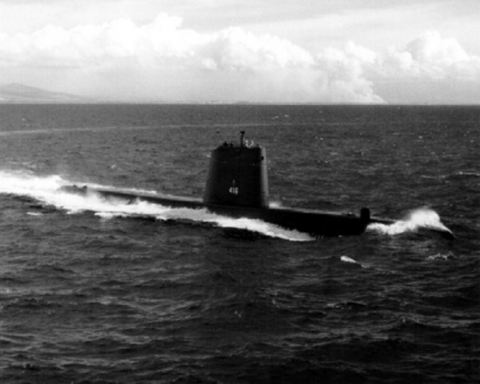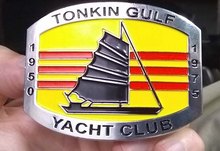 |
||||||||||||||||||||||||||||||||||||||||||||||||||||
| TO RECEIVE A NOTIFICATION EMAIL AS SOON AS THE | ||||||||||||||||||||||||||||||||||||||||||||||||||||
| UNDERWAY! 2026 WALL CALENDAR IS SHIPPABLE - CLICK HERE |
||||||||||||||||||||||||||||||||||||||||||||||||||||
 |
||||||||||||||||||||||||||||||||||||||||||||||||||||
 |
||||||||||||||||||||||||||||||||||||||||||||||||||||
| For RATING SHIRTS - Click on your Rating Abbreviation below: | ||||||||||||||||||||||||||||||||||||||||||||||||||||
|
||||||||||||||||||||||||||||||||||||||||||||||||||||
| Click on your Rating abbreviation above: | ||||||||||||||||||||||||||||||||||||||||||||||||||||


U.S.S. TIRU
(SS-416)Click to view crew list
USS TIRU (SS-416) - a Balao class submarine
In Commission 1948 to 1975SS-416 Deployments - Major Events
| Add a SS-416 Shellback Initiation | Add a SS-416 Deployment - Major Event | ||||
| Month | Year | to | Month | Year | Deployment / Event |
|---|---|---|---|---|---|
| APR | 1944 | - | Keel Date: 17 APR 1944 at Mare Island Naval Shipyard Vallejo CA | ||
| SEP | 1947 | - | Launch Date: 16 SEP 1947 | ||
| SEP | 1948 | - | Commissioned: 1 SEP 1948 | ||
| JUN | 1962 | - | OCT | 1970 | West Pac-Viet Nam |
| JUN | 1963 | - | FEB | 1966 | West Pac-Viet Nam |
| JUN | 1965 | - | NOV | 1965 | West Pac-Viet Nam |
| OCT | 1967 | - | OCT | 1967 | Operation Sword Hilt |
| JUN | 1968 | - | SEP | 1968 | West Pac-Viet Nam |
| AUG | 1970 | - | Shellback Initiation - 16 AUG 1970 - Pacific Ocean | ||
| JUN | 1974 | - | DEC | 1974 | UNITAS |
| JUL | 1974 | - | Shellback Initiation - 16 JUL 1974 - Atlantic Ocean | ||
| JUL | 1975 | - | Decommissioned: 1 JUL 1975 | ||
SS-416 General Specifications
Class: Balao class submarine
Complement: 10 Officers and 75 Enlisted
Displacement: 1975 tons
Length: 319 feet 6 inches
Beam: 27 feet 4 inches
Draft: 17 feet
Range: 15 900 Nautical Miles
Final Disposition: Sunk as a target off Norfolk Virginia 19 July 1979
USS TIRU (SS-416)
TIRU (SS-416)--laid down on 17 April 1944 at Vallejo,
Calif., by the Mare Island Navy Yard--remained in an
uncompleted state for three years as a result of the
curtailment of the submarine building program at the end of
World War II. In the fall of 1947, the Navy decided to
complete TIRU as a "Guppy" (greater underwater propulsive
power) snorkel boat. Its altered design incorporated
improvements resulting from the Navy's recent combat
experience and German technical development. TIRU was
launched on 16 September 1947; sponsored by Mrs. John P.
Cromwell, the widow of Capt. John P. Cromwell, who rode
submarine SCULPIN (SS-191) to his death rather than risk
divulging important war plans under torture; and
commissioned on 1 September 1948, Comdr. Charles N. G.
Hendricks in command.
TIRU conducted training and trials off the west coast
before heading for Hawaii on 10 February 1949. Homeported
at Pearl Harbor and attached to Submarine Squadron (SubRon)
12, the "Guppy" submarine operated in Hawaiian waters for a
year and one-half before conducting a 12-day snorkel voyage
from Pearl Harbor to the west coast which ended upon her
arrival at San Diego on 27 June 1950.
On 9 June 1951, TIRU sailed for the Far East and her
first Western Pacific (WestPac) deployment. While in
Asiatic waters, she operated in support of United Nations
forces engaged in combating communist aggression in Korea.
Then, after departing Yokosuka, Japan, on 26 November, the
warship arrived at Pearl Harbor on 6 December. Her
operations in the Hawaiian area continued until 24 February
1952, when TIRU got underway for her second WestPac
deployment.
Between 1952 and 1959, TIRU conducted four more WestPac
deployments, interspersed with local operations--providing
services for antisubmarine warfare (ASW) exercises and
conducting type-training. Operating with the 7th Fleet from
1 January to 17 April 1959, on her seventh WestPac tour,
TIRU returned to Pearl Harbor for a major overhaul, entering
the shipyard on 4 May 1959 for a fleet rehabilitation and
modernization (FRAM) conversion to a "Guppy" III. In the
course of the work, the ship took on a new and different
external appearance. Her hull was lengthened by 12 feet;
she acquired a new conning tower, five feet longer than its
predecessor, and a fiberglass sail was added. Internally,
increased sonar and ordnance equipment greatly enhanced the
ship's capabilities in those key areas. On the last day of
the year 1959 TIRU emerged from the overhaul a virtually
“new” ship.
From 1 January to 10 November 1960, TIRU conducted
local operations out of Pearl Harbor to prove the worth of
the FRAM/Guppy III conversion. After testing and honing her
capabilities, the submarine departed Pearl Harbor on 10
November for another 7th Fleet deployment. She later
returned to Pearl Harbor on 10 May 1961 upon completion of
her eighth WestPac cruise.
Local operations out of her home port occupied the rest
of 1961 and the first few months of 1962. She again was
deployed to WestPac in March and April before returning to
Hawaiian waters on 3 May. The next month, the ship operated
with a carrier task force on ASW "hunter-killer" exercises.
While the submarine was engaged in a firing exercise, a
torpedo malfunction in her after torpedo room seriously
damaged the compartment, and 18 men were overcome by toxic
gases. Quick reaction averted a more serious tragedy and
earned four men--one officer and three enlisted men--Navy
and Marine Corps medals.
The ship conducted three more WestPac deployments
through 1965 before she returned to a schedule of local
operations. TIRU entered another major overhaul on 6
December 1965--one which saw the installation of a masking
system to cover the ship's own noise while snorkeling.
Further internal alterations improved both her fighting
capacity and her habitability. She conducted sea trials
until 14 June 1966 when she departed Hawaii for the Naval
Torpedo Station at Keyport, Wash., for an alignment and
testing of her weapon system. The submarine departed the
west coast on 9 July, bound for Hawaiian waters, and made
port at Pearl Harbor nine days later to commence
pre-deployment operations.
After a 16-day passage from Hawaii, TIRU arrived at
Brisbane, Australia, on 12 October. Three days later, she
sailed to commence ASW exercises in the Coral Sea with
warships of the Australian, British, New Zealand and United
States Navies. The nine-day exercise provided for submarine
patrol, reconnaissance, and attack operations against both
carrier and destroyer task forces before the submarine
returned to Brisbane on 26 October.
On 2 November, TIRU got underway for Subic Bay,
Philippine Islands. One day out, the submarine ran aground
on Frederick Reef. For two anxious days and nights, TIRU
attempted to extricate herself from the predicament by
backing off under her own power, but to no avail. On 6
November, civilian tug CARLOCK and Australian destroyer HMAS
VENDETTA came to the rescue, arriving on the scene and
commencing salvage operations under the direction of a 7th
Fleet salvage officer. Returning to Brisbane, TIRU was
dry-docked at South Brisbane Dockyard for emergency repairs
and damage estimates.
Following temporary repairs to her sonar dome, outer
hull, and keel, the submarine gingerly made her way from
Australia to the United States Naval Ship Repair Facility,
Yokosuka, Japan. En route, TIRU called at Guam to provision
alongside submarine tender PROTEUS (AS-19) and pick up new
crew members. Arriving at Yokosuka on 29 November, the
submarine entered drydock for restricted availability.
Once repaired, TIRU left Yokosuka on 9 January 1967 for
Chin Hae, Korea, and while in transit provided services for
an Iwakuni-based patrol plane squadron. Operating with
Republic of Korea (ROK) ASW forces from 15 to 17 January,
TIRU arrived back at Yokosuka on the 22d for upkeep. From 7
February to 20 March, the submarine conducted special
operations before returning for further upkeep prior to a
"Yankee Station" deployment off Vietnam. She later operated
with Nationalist Chinese forces on ASW exercises; conducted
additional special operations, and again provided services
for patrol plane squadrons based at Iwakuni, before
returning to Hawaii on 16 May.
Spending the remainder of the year 1967 on local
operations out of Pearl Harbor, TIRU commenced the year 1968
as a unit of Submarine Division (SubDiv) 72, SubRon 7, and
Submarine Flotilla ( SubFlot) 5. On 16 May, the submarine
was shifted to operational control of Commander, 7th Fleet,
with her home port changed to Yokosuka, Japan. Departing
the western Pacific on 4 October after a tour which had
included a transit through the Vietnam war zone, TIRU
returned to the west coast; and her home port was changed to
San Francisco, Calif., while she became a unit of SubDiv 52,
SubRon 5, SubFlot 1.
Overhauls and local operations occupied the ship until
12 November 1969, when TIRU sailed west for another WestPac
deployment. Transferred to the command of the Commander,
7th Fleet on 6 December, the submarine arrived at Yokosuka
on 10 December. Five days later, she got underway for
special operations which took her into 1970.
TIRU participated in Exercise "Sea Rover," with United
States and Australian naval units, before heading home for
the United States at the conclusion of her WestPac
deployment. While approaching Guam for voyage repairs, she
routinely copied the evening weather broadcast which was
accompanied by an urgent alert notifying the ship of a
search and rescue (SAR) operation underway to look for and
rescue survivors of a small craft which had been adrift for
two days in a heavy sea. An extensive search by Guam-based
SAR forces had thus far turned up nothing, but TIRU located
the five people--two of them Japanese nationals--and rescued
them, despite darkness and high seas. Soon after TIRU's
arrival at Guam on 14 April 1970, the Japanese consul
visited the submarine to express his government's
appreciation for the ship's rescue mission.
Subsequently arriving at San Diego on 8 May after a
brief period at Pearl Harbor, TIRU conducted local
operations and underwent an overhaul prior to being
transferred to the Atlantic Fleet on 1 August 1970.
Underway on the 6th of August for Charleston, S.C., her new
home port, TIRU called at Acapulco, Mexico; Rodman, Canal
Zone; transited the Panama Canal and visited Kingston,
Jamaica, before reaching Charleston harbor on 2 September.
For the remainder of the year, the ship conducted local
operations, provided services, and underwent type
training--activities which continued into 1972. Later
transferred to SubFlot 6, SubRon 4, SubDiv 41 during 1972,
TIRU operated in the Caribbean and off the lower east coast
of the United States, with two deployments to European
waters into 1975.
On 1 July 1975, TIRU was decommissioned and struck from
the Navy list to be sold to the Turkish government. An
American arms embargo imposed on Turkey as a result of the
Cyprus tensions between Greece and Turkey delayed the sale,
however, even though negotiations and arrangements had been
well into the planning stages. As of the end of 1979, the
submarine's status was uncertain.
The transfer to Turkey never took place and former
TIRU was sunk as a target off Norfolk, Va., on 19 July 1979.
[Note: The above USS TIRU (SS-416) history may, or may not, contain text provided by crew members of the USS TIRU (SS-416), or by other non-crew members, and text from the Dictionary of American Naval Fighting Ships]
